Introduction
Azure and AWS are two leading cloud service providers that offer a wide range of solutions to meet the diverse needs of businesses. With their robust infrastructure, high availability, and advanced security measures, Azure and AWS are trusted authorities in the field of cloud services. In this article, we will explore the key features and comparisons of Azure and AWS in areas such as compute services, storage services, networking capabilities, security features, pricing models, machine learning and AI capabilities, data center infrastructure, ease of use, integration with existing ecosystems, and use cases.
By examining the strengths and considerations of each platform, you can make an informed decision about which cloud provider aligns best with your organization's strategic goals and technical requirements.
Overview of Azure and AWS
AWS and Azure are at the forefront of cloud computing, offering a comprehensive suite of solutions that cater to various business needs such as computing power, storage options, networking capabilities, and robust security measures. Both platforms ensure top-tier availability, leveraging a global network of data centers to maintain data redundancy and resilience. This high availability is crucial for business continuity, allowing for swift recovery of data from alternative locations in the event of a data center outage.
In terms of fault tolerance, Azure and AWS offer impressive capabilities, ensuring that even in the face of infrastructure or application issues, functionalities can be seamlessly transferred to operational servers, thereby minimizing disruptions. This capability is evidence of the strong disaster recovery strategies that these technology giants incorporate. With recent announcements at the AWS re: Invent event showcasing new advancements, the innovation within these platforms is continuously evolving, indicating their dedication to offering cutting-edge solutions.
Acknowledging the influence of swift digital transformation, the growing dependence on technologies like IoT, AI, and real-time analytics is propelling the need for services in the sky. Based on industry analysis, the implementation of computing architectures is enabling businesses to operate more efficiently and adapt swiftly to changing market conditions. This shift to cloud-based operations is anticipated to significantly propel market growth, with cloud technology playing a pivotal role in enabling enterprises to harness advanced technologies.
Moreover, the proliferation of models like IaaS, SaaS, and PaaS, especially among SMEs, is amplifying the demand for cloud offerings. Such offerings are crucial in delivering the flexibility and expandability that contemporary businesses need. These factors, combined with governmental support for technology adoption, emphasize the significance of selecting a provider in the competitive landscape that is in line with an organization's strategic objectives and technical needs, whether it is AWS, another service provider, or any other alternative.
Compute Services Comparison
Both AWS and another cloud provider offer a comprehensive range of computing options, such as virtual machines (VMs), containerization, and serverless computing. Each platform has unique offerings, with the recent introduction of Copilot by a specific cloud provider, an AI assistant that aids in managing operations from cloud to edge. AWS, on the other hand, is recognized for its high availability, fault tolerance, and disaster recovery capabilities. When assessing compute offerings, it's crucial to take into account not just the technical specifications but also the operational advantages, such as the capability to customize access to AI tools like Azure's Copilot, aligning with organizational standards and security policies.
On the performance front, Microsoft's cloud infrastructure has evolved significantly to support AI and machine learning workloads, with a focus on purpose-built infrastructure. This approach aligns hardware with the specific demands of emerging technologies and AI solutions, as highlighted in annual reports by Forrester Consulting and Ipsos. AWS's compute services are similarly optimized for performance, with a strong operations background and a commitment to building scalable, cost-effective solutions that adhere to business requirements, including security and database management.
In the context of scalability, both AWS and another cloud provider offer solutions that can accommodate the ever-growing data and processing needs of modern enterprises. The unified data analytics platform, Fabric, provides a comprehensive environment for storing, organizing, training on, and querying data, which could challenge other established platforms like Databricks. AWS's scalability is equally notable, with extensive experience in delivering high-performance software solutions.
Pricing models between the two cloud providers, AWS and another platform, are also a critical factor. Although both platforms have competitive pricing, the details can vary depending on the services utilized and the level of commitment. Organizations like Vertex Pharmaceuticals have leveraged AWS for drug discovery, harnessing machine learning to analyze large datasets efficiently.
In the end, choosing between AWS and another cloud provider for compute offerings will rely on your company's particular requirements, including factors such as AI functionalities, scalability, performance, and pricing. By carefully evaluating each platform's offerings, you can determine which aligns best with your strategic objectives and operational requirements.
Storage Services Comparison
When it pertains to storage solutions in the cloud, both AWS and Azure provide appealing features and benefits. Recognized for its strong presence in the enterprise sector, the platform provides a suite of storage solutions that cater to various needs, from object storage to file and block storage, all while maintaining a trusted relationship with its customers as exemplified by IFCO Systems' collaboration with Rackspace for the implementation of this platform.
AWS, on the other hand, stands as a leader in cloud computing, boasting a wide array of offerings. Its storage offerings are no exception, with a pay-per-use model that has attracted a broad user base, including industry giants like Chess.com that leverage AWS to manage their massive daily data demands.
However, the choice between AWS and another cloud provider isn't solely about capability; it's also about cost, durability, and availability. Like Chess.com and IFCO Systems have demonstrated, the decision frequently boils down to the provider's capacity to align with a company's particular requirements, such as Wowza's customers who experienced unforeseen cost increases, prompting them to contemplate managed alternatives.
In the rapidly evolving landscape of cloud solutions, the commitment of Azure to enhancing its platform with AI solutions and facilitating cloud migrations underscores its focus on future-proofing its offerings. At the same time, AWS's unwavering market dominance and the recent growth of offerings, like CloudCasa's backup solutions, demonstrate its commitment to fulfilling varied customer needs.
Ultimately, the decision between Azure and AWS for storage solutions hinges on a comprehensive evaluation of your organization's unique requirements, the potential for growth, and the strategic alignment with your technological vision. Both platforms offer robust solutions, but the best choice will depend on the specifics of your workload, regulatory considerations, and your company's approach to digital transformation.
Networking Capabilities Comparison
When evaluating the networking capabilities essential to cloud infrastructure, it becomes clear that both Amazon Web Services (AWS) and Microsoft's competitor have established themselves as leaders in the field, each with a unique approach to virtual networks, load balancers, and content delivery networks. With AWS's earlier introduction to the market in 2002, they have established a robust service offering across an array of categories, which has allowed them to capture a significant market share. Entering the scene in 2010, this company has made notable strides in market presence and innovation, especially in networking.
The platform proudly showcases one of the world's most extensive wide area networks, with over 200 edge points of presence and more than 40,000 peering connections, ensuring optimal Public IP connectivity. This extensive network backbone enables low-latency and high-reliability interconnectivity between Microsoft's cloud platform and other clouds, such as AWS. Notably, the recent partnership between Microsoft's cloud computing platform and Lumen on the Exam-Switch program promises next-generation solutions that will further enhance capacity and reduce provisioning times.
On the other hand, AWS has been at the forefront of adopting AI to address the complexities of modern telecommunication networks. The Operator Insights platform showcases this, utilizing AI for efficient data ingestion, transformation, and analysis within a modern data mesh architecture. This service is tailored for the telecom industry, enabling operators to obtain deep insights into network health and customer experience quality.
Furthermore, Arc represents Microsoft's commitment to multicloud orchestration and management, providing a unified approach to managing resources across various environments. Since its introduction, Azure Arc has been adopted by numerous enterprises for managing servers, Kubernetes clusters, databases, and applications, enhancing their ability to oversee their multicloud infrastructure.
In terms of security, Microsoft's substantial investment in cybersecurity, amounting to over USD $1 billion annually, underpins its commitment to data protection. This is enhanced by the knowledge of more than 3,500 security experts committed to protecting customer data throughout their cloud-based offerings.
As enterprises navigate the decision between these two computing giants, they must consider the distinct networking features, performance metrics, scalability options, and security assurances each platform offers. The competitive landscape of cloud platforms continues to evolve, with both AWS and another cloud platform driving innovation and expanding capabilities to meet the growing demands for scale, agility, and cost-effectiveness in network services.
Security Features and Compliance
Cloud security remains a critical focus for organizations seeking to safeguard their data and maintain compliance with evolving regulations. Both AWS and Microsoft's cloud platform provide a wide range of security features and compliance certifications catered to various global standards. For instance, AWS partners like Skyflow utilize AWS's infrastructure to create zero-trust data privacy vaults, highlighting the platform's commitment to data protection and the ability to adhere to stringent regulations such as those in the European Union, where data residency is a key concern.
The security approach of Microsoft's cloud computing platform is just as thorough, with a framework in place to keep a current inventory across all production infrastructure and offerings. With retention of security logs for significant periods and centralized access for efficient threat investigation, Azure's security strategy is designed to rapidly detect and address potential threats, ensuring robust protection for customer data.
Both providers of cloud-based solutions advocate the pricing model of pay-as-you-go, offering savings by eliminating the need for upfront investment in hardware and software. Moreover, adoption of cloud computing can reduce the necessity for dedicated IT security teams, as the CSPs shoulder the significant responsibility of data security, leveraging years of expertise in network and endpoint protection.
Given the ever-present risk of security breaches, choosing the right cloud service provider becomes paramount. Both AWS and another cloud platform have evolved their cybersecurity measures extensively, drawing from historical knowledge and ongoing innovation to offer solutions like behavioral detections that transcend traditional signature-based security.
With cybersecurity evolving from decades of research and adaptation to new threats, organizations can benefit from the advanced security measures provided by both AWS and another cloud computing platform. By integrating these insights and best practices into their strategies, enterprises can confidently navigate the intricate landscape of security and compliance.
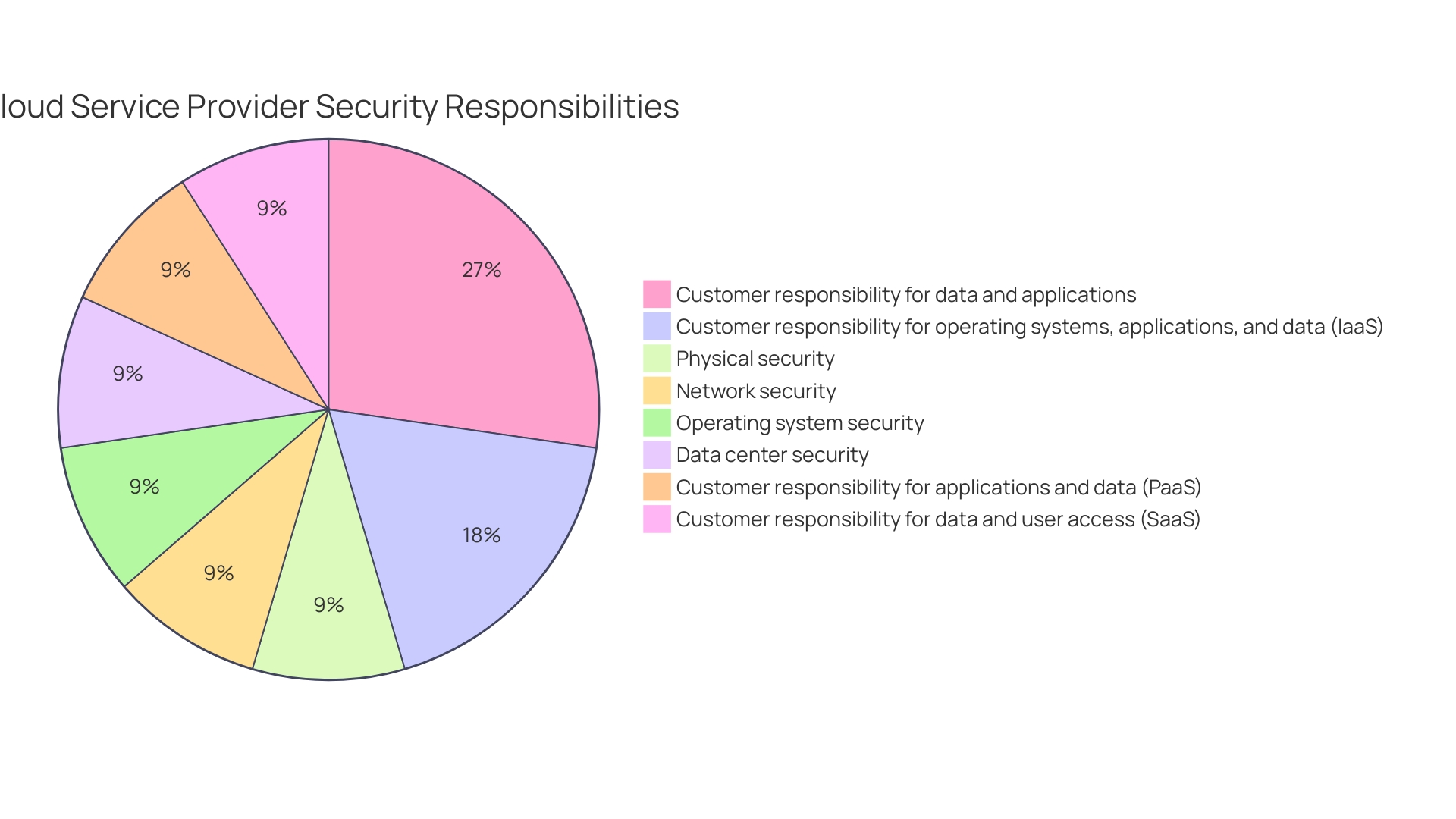
Pricing Models and Cost Efficiency
Understanding the cost structures of cloud service providers like AWS is crucial for organizations to make informed decisions that align with their financial and technological objectives. Both AWS and another cloud computing service offer distinct pricing models that cater to a variety of needs and scenarios. Azure's approach with its as-a-service solution, for instance, emphasizes flexibility and aims to provide consistent pricing across data centers, which aids in financial management and capacity planning. A notable case includes a provider that sought to differentiate its services by focusing less on hardware management and more on customer consumption requirements, using a rate card system for predictable costs.
AWS also advocates for cost efficiency through its Well-Architected Framework, which introduces the Cost Optimization pillar, encouraging continual refinement throughout a workload’s lifecycle. This strategy involves collaborating with finance and technology leads to create an IT value story, linking technology spend to business outcomes. AWS's cost optimization practices revolve around four focus areas: financial management, resource provisioning, data management, and cost monitoring.
The pay-as-you-go pricing option allows for building modern, scalable, and elastic workloads utilizing cutting-edge hardware. However, organizations must navigate the learning curve associated with adopting cloud computing, particularly when transitioning from legacy applications or addressing regulatory and data residency requirements. In cases where on-premise solutions are more suitable due to these constraints, the advantages of the cloud's pricing may have a lesser impact.
OODA's analysis underscores the importance of revisiting cloud costs in light of factors such as AI adoption, inflation, and digital modernization efforts. As companies like Microsoft release comprehensive data analytics platforms like Fabric, the importance of evaluating and comparing pricing models for solutions that unify and streamline data operations becomes increasingly apparent.
To sum up, deciding between AWS and another cloud provider requires taking into account not just the cost and functionality of their offerings, but also how these expenses align with a company's particular usage scenarios, compliance requirements, and long-term objectives. As cloud computing continues to evolve, staying informed of the latest offerings and pricing strategies will be crucial for organizations aiming to maximize their technological investments.
Machine Learning and AI Capabilities
AWS and other leading providers are at the forefront of offering machine learning (ML) and artificial intelligence (AI) solutions that are crucial for businesses seeking to harness advanced technology. These services include sophisticated capabilities such as natural language processing, image recognition, and advanced predictive analytics.
When it comes to ML, a subset of AI, AWS and another platform both offer dynamic platforms. ML utilizes algorithms and statistical models, allowing systems to learn from data and enhance performance without explicit programming. This approach is integral for applications such as speech recognition and natural language processing. In the case of Microsoft's cloud computing platform, the recent introduction of Copilot for Microsoft 365 exemplifies innovation, aiming to increase productivity by automating routine tasks, allowing for a focus on more complex, human-centric work. Users of Copilot reported a 70% increase in productivity and a 68% improvement in work quality, demonstrating its transformative impact.
AI, on the other hand, aspires to simulate human intelligence across a broader spectrum, including reasoning, problem-solving, and creativity. A certain cloud computing platform has been making progress in this field, especially with generative AI, which has experienced high levels of acceptance in marketing and sales, as well as product development. As highlighted in Microsoft Ignite, AI's role in reshaping workflows and enhancing customer engagement is becoming increasingly apparent.
AWS has also demonstrated the practical application of AI and ML in various industries. An example of this is the partnership with ICL, where AWS's ML offerings were used to oversee industrial equipment in challenging conditions, typically done by hand. This not only improved efficiency but also potentially mitigated environmental risks.
Both AWS and another cloud provider are pushing the boundaries of ML and AI, and their offerings are continually evolving. For instance, the TR Labs team successfully integrated AI/ML models into products and systems to enhance productivity, starting from text summarization to complex NLP tasks. Such advancements underscore the necessity for developers to stay current with rapid technological progress.
Given the projected growth of the ML market to $503.40bn by 2030, with an annual growth rate of 36.08%, it's evident that the integration of ML and AI offerings from providers like AWS and Azure will continue to be a major driver for innovation and business optimization. This comparison sheds light on the distinct but interconnected roles Microsoft's cloud platform and AWS play in the realm of AI and ML, guiding businesses in their quest to select the most appropriate platform for their AI initiatives.
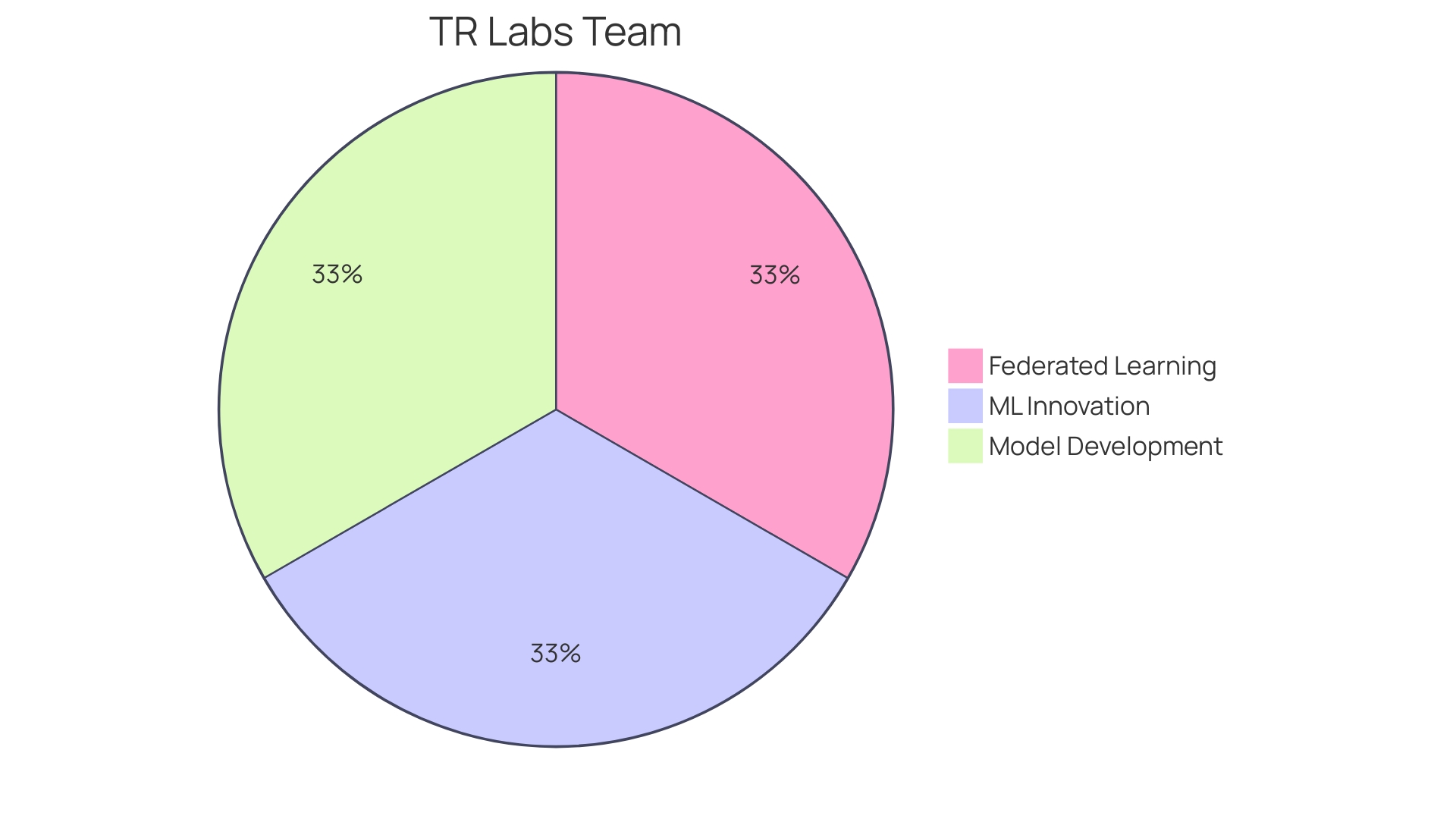
Data Center Infrastructure and Geographic Reach
The extensive networks of data centers that service providers like Microsoft's cloud platform, Azure, and Amazon Web Services operate are crucial in maintaining high availability and low latency for their services. These networks span the globe, with Microsoft's cloud platform and AWS boasting significant presence in various regions. This coverage ensures that no matter where your business operates, you can find a data center nearby to minimize latency and maximize performance.
Azure's approach to cloud adoption involves an extensive selection of regions worldwide. Choices regarding the selection of a region can have an effect not just on the time delay but also on the cost-efficiency of offerings, as the pricing fluctuates depending on local aspects like land, workforce, and energy costs. Microsoft's commitment to its customers in the European Union (EU) and European Free Trade Association (EFTA) is evident in their promise to process and store customer data within these regions. This commitment is further strengthened by their comprehensive Cloud Adoption Framework and the Well Architected Framework, which guide organizations to optimize their cloud-based workloads.
AWS, similarly, provides a robust infrastructure that's been critical in supporting various enterprises' everyday operations. Their data centers are the core for important applications, resources, and data processing and storage. The continuous utilization of these facilities is supported by an environment-control infrastructure and the IT infrastructure within the data centers.
Recent industry developments underscore the importance of data center scalability, including innovations in cooling, power, and protection. Energy efficiency and the shift towards sustainable operations have become increasingly crucial, with many data centers seeking to avoid becoming 'stranded assets' due to their power-intensive nature.
While the trend leans towards off-site computing, on-premises data centers are not obsolete. Analysts from Synergy Research Group observed that expenditures on in-house data center hardware and software have surpassed $100 billion, noting that many industrial companies still find value in on-premises computing. This is especially accurate for data-intensive operations like connected factories, which require immediate processing and cannot rely solely on cloud solutions.
As the industry progresses and companies plan to build more data centers by the end of the decade, professionals must stay informed on the latest trends and consider the implications of data center developments for their operations. Whether optimizing for cost, performance, or compliance with regional data sovereignty laws, the choice between AWS and another provider demands a strategic approach, taking into account the unique requirements of your business and the capabilities of each provider's infrastructure.
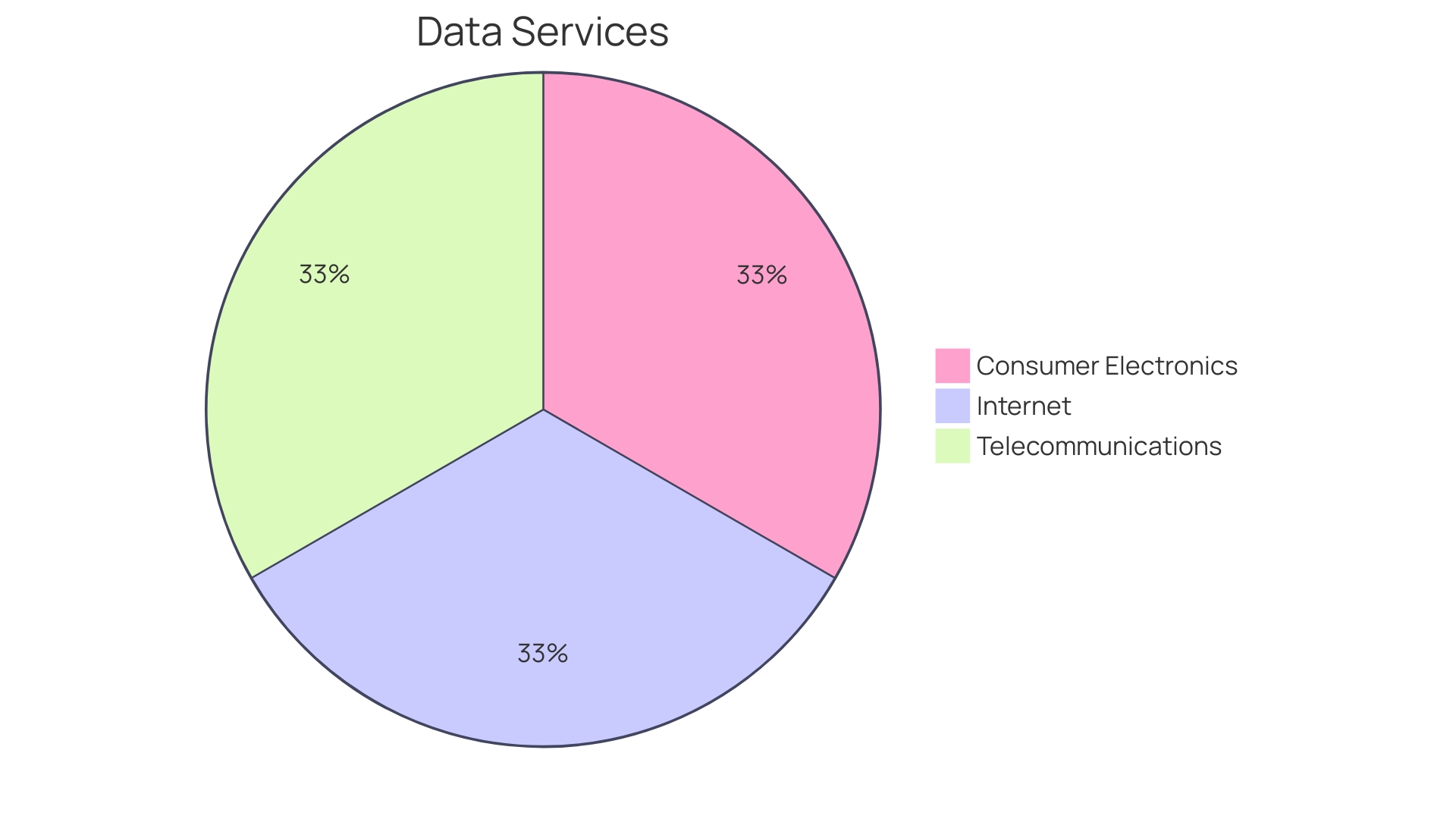
Ease of Use and Documentation
The pursuit of efficiency in contemporary software development and IT operations depends greatly on the choice of cloud solutions that are not just powerful but also user-friendly and well-documented. The industry leaders AWS offer robust platforms with user-centric interfaces and comprehensive resources, but they cater to different needs and preferences.
The interface of Microsoft's cloud platform has been crafted with an emphasis on integrating with existing tools and offerings from Microsoft, which can be advantageous for organizations already immersed in the Microsoft ecosystem. The seamless connection with tools like SharePoint facilitates a collaborative environment that simplifies file storage and teamwork. For example, Vertex Pharmaceuticals utilized the capabilities of a cloud computing platform to improve their drug discovery process, where the data analysis tools provided by the platform played a crucial role in their machine learning applications for image segmentation, showcasing the platform's proficiency in managing intricate data-intensive tasks.
On the other hand, AWS is renowned for its intuitive and user-friendly experience. Its interface is often cited for its straightforward design, which can accelerate the onboarding process and reduce the learning curve for developers and IT professionals. 'Fively's Advice emphasizes AWS's user-focused approach, noting its ease and efficiency, which is especially advantageous for a diverse range of offerings such as machine learning, data analytics, and beyond.
Moreover, automation solutions like Azure Automation and Azure Functions have garnered attention due to their potential in streamlining tasks in the cloud. The automation service from Microsoft provides a platform to create and execute scripts that efficiently manage resources in the environment, which is crucial for scaling operations and ensuring consistency.
Considering documentation, both platforms provide extensive resources. AWS, holding the largest market share according to Gartner, has had the opportunity to refine its documentation, ensuring stability, reliability, and security are well-covered for its users. In the same way, the documentation of Microsoft's cloud computing platform is comprehensive and integrates well with Microsoft's larger suite of products, making it a valuable resource for developers using Visual Studio and other Microsoft services.
In the ever-changing infrastructure landscape, where AWS, Google Cloud, and other cloud providers control a substantial 67% of the market, it's evident that the decision between Azure and AWS may depend on specific organizational needs and existing infrastructures. The key is to take into account the intricacies of each platform, from user-friendliness to the extent of documentation, to guarantee that your team can operate with flexibility and assurance in the online environment.
Integration with Existing Ecosystems
Both AWS and the other cloud provider offer comprehensive integration capabilities with well-known tools and solutions, which are crucial for businesses aiming to migrate to the cloud. The integration of Azure with Oracle database services, for example, is enhanced through data centers located in close proximity, ensuring operational ease and performance efficiency. This collaboration between Microsoft and Oracle exemplifies the strategic partnerships formed to facilitate seamless integration with existing enterprise ecosystems. Holger Mueller, a principal analyst at Constellation Research Inc., emphasizes the significance of such collaborations, stating that the setup of Microsoft's cloud platform enables Oracle data to be accessed with the same ease as if it were a native service provided by Microsoft.
On the other hand, AWS has made significant strides in its integration offerings, as evidenced by announcements at its re: Invent event. AWS has demonstrated its dedication to ongoing innovation, including advancements in domains like the Amazon Aurora Elastic Cache and the Amazon One Enterprise, which are intended to enhance the computing experience for AWS users.
When considering integration platforms, the Gartner® Magic Quadrant™ for Integration Platform as a Service, a reputable industry report, has recognized Microsoft as a Leader in this space. This acknowledgment underscores Microsoft's ability to meet the breadth of integration requirements and positions Azure as a robust option for organizations seeking a comprehensive iPaaS solution.
Moreover, next-generation iPaaS solutions are deemed complete when they support all types and scales of integrations, becoming the companywide standard and eliminating the need for point solutions. Advancements in AI and machine learning within iPaaS platforms further aid in providing recommendations for integration patterns, optimizing time and productivity for both professional and novice users.
In the case of Bosch and its Solid Oxide Fuel Cell (SOFC) system, the integration of digital twins demonstrates the potential of online platforms to support complex, data-intensive operations. The pilot end-to-end ELT processes for the SOFC product exemplify how online services can be utilized to reduce manufacturing costs, monitor unit operations, and maintain state-of-health over a product's operational lifetime.
The decision between AWS and the integration of cloud computing should be guided by an organization's specific needs, taking into consideration factors such as existing infrastructure, the extent of integration, and the potential to leverage AI-driven insights for improved operational efficiency and innovation.
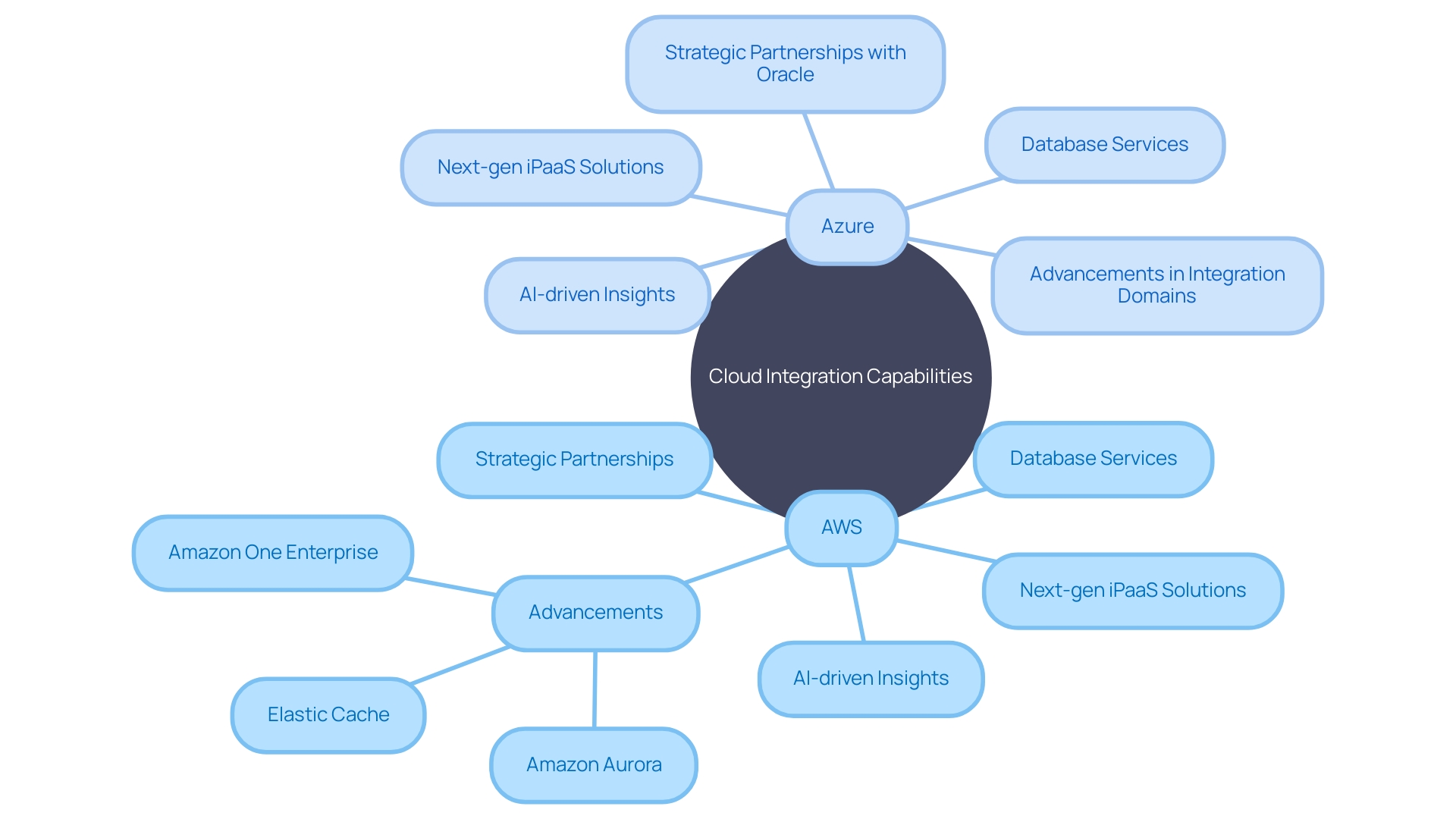
Use Cases and Best Practices for Each Platform
Both AWS and Microsoft's cloud platform play pivotal roles in the digital transformation of various sectors, offering tailored solutions for a multitude of applications. The expansion strategy of Azure focuses on broadening its global presence and enhancing regional diversification to provide customers with increased choice, flexibility, and resilience in their cloud-based solutions. This multi-region approach not only ensures high availability and performance but also aligns with data sovereignty and privacy regulations, which require data localization to protect citizens.
AWS remains the top choice in terms of market share, as indicated by a recent report from Canalys revealing that 62% of businesses utilize AWS, in contrast to 48% for Microsoft's cloud platform. Industries such as retail & ecommerce, finance & banking, and software are particularly proactive in adopting cloud-based solutions, leveraging AWS for its extensive service offerings and maturity in the cloud space.
Both platforms prioritize real-time data synchronization, which is crucial for improved data consistency, enhanced collaboration, and better decision-making capabilities. Nitin Kumar from T and T Consulting emphasizes the importance of planning for AI implementation, stating that data is the competitive edge for businesses. Preparing a data estate for the transition from POC to production is essential for harnessing AI's full potential.
Furthermore, Microsoft's Adoption Framework for provides comprehensive guidance for overcoming common roadblocks in adoption, assisting organizations in navigating the complexities of integration at the desired scale. As organizations continue to seek out the most effective cloud solutions, the dynamic capabilities and strategic growth of Azure and AWS remain central to fostering innovation and driving business success.
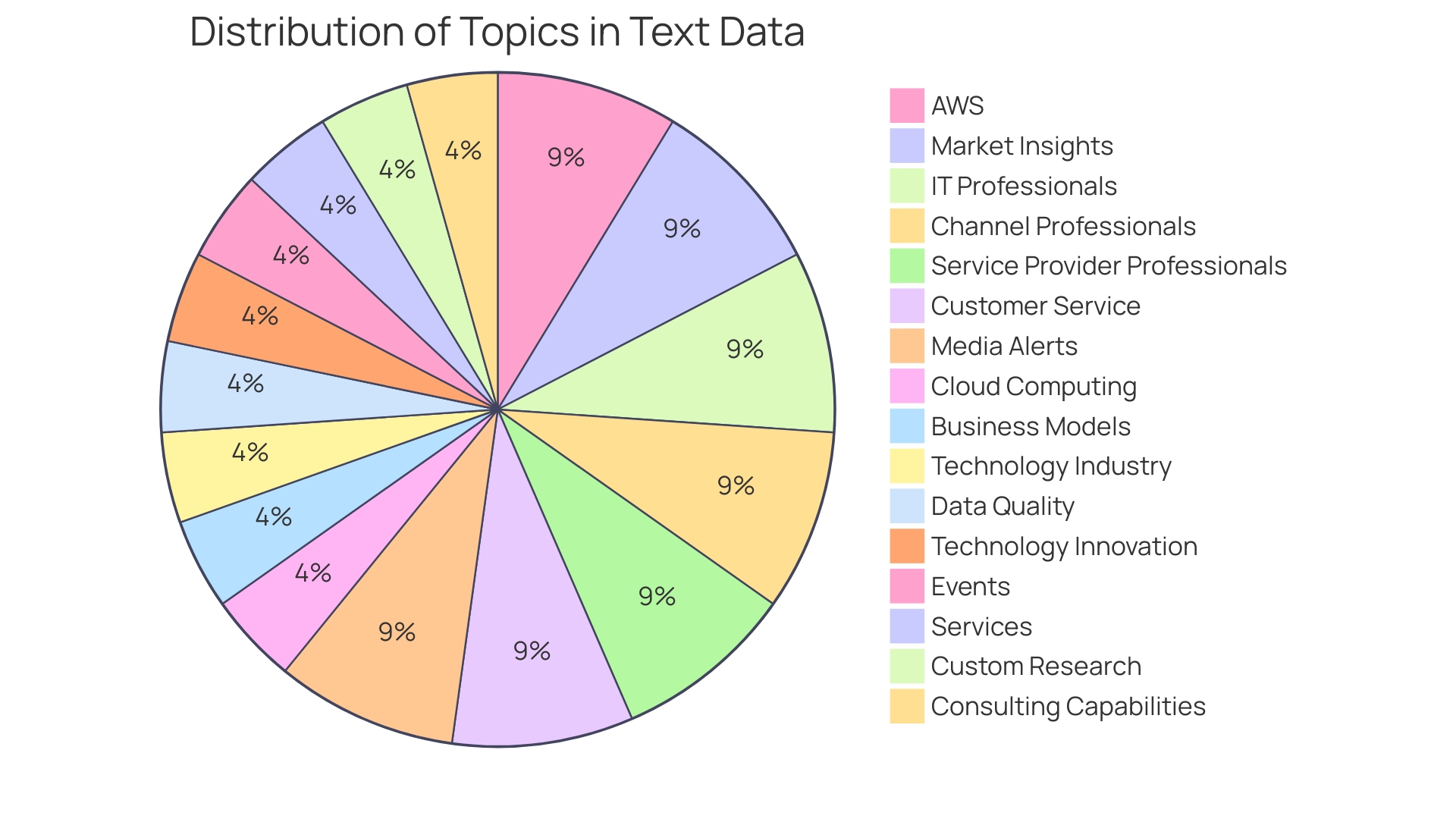
Conclusion
In conclusion, Azure and AWS are leading cloud service providers offering robust infrastructure, high availability, advanced security measures, and a wide range of solutions. When comparing Azure and AWS, it's important to consider factors such as compute services, storage services, networking capabilities, security features, pricing models, machine learning and AI capabilities, data center infrastructure, ease of use, integration with existing ecosystems, and use cases.
Both Azure and AWS provide a robust set of compute services, with Azure introducing Copilot for AI-assisted management and AWS excelling in high availability and fault tolerance. In terms of storage services, Azure is strong in the enterprise sector while AWS offers a comprehensive range of services, and the choice depends on factors like cost and durability.
Azure boasts an extensive wide area network and partnerships, while AWS utilizes AI to address telecommunication complexities. Both platforms prioritize security, with Microsoft's substantial investment in cybersecurity and AWS's commitment to data protection.
Pricing models and cost efficiency should be evaluated based on specific use cases, regulatory requirements, and strategic goals. Azure and AWS offer distinct pricing models emphasizing flexibility and cost optimization.
Machine learning and AI capabilities are pivotal, with both platforms offering dynamic platforms for ML and AI services. Azure focuses on automating routine tasks, while AWS showcases practical applications in various industries.
Data center infrastructure and geographic reach are crucial for high availability and low latency. Azure and AWS have expansive networks of data centers, and organizations should consider factors like regional data sovereignty and performance when selecting a provider.
Ease of use and documentation are important factors, with Azure integrating well with Microsoft tools and services and AWS providing an intuitive user experience. Both platforms offer comprehensive documentation.
Integration with existing ecosystems is facilitated by Azure's collaboration with Oracle and AWS's continuous innovation in integration offerings.
Azure and AWS have extensive use cases and best practices, with Azure expanding its global footprint and AWS leading in market share across industries.
By considering these factors, organizations can make informed decisions that align with their strategic goals and technical requirements, leveraging the dynamic capabilities and strategic growth of Azure and AWS in the realm of cloud services.




